NIDDK 75th Anniversary
1950-2025
Message from the Director

I am excited to celebrate NIDDK’s 75th anniversary and the many people who’ve made possible our contributions to science, research, and health.
This year and onward, we’ll build on past advances by NIDDK staff, grant recipients, and clinical study volunteers whose contributions have helped us understand the underlying causes of diseases and conditions and identify new prevention and treatment strategies. For example, NIDDK-funded research unlocked the mechanism for the new generation of anti-obesity drugs helping millions of Americans. We supported research that revolutionized diabetes prevention and treatment, including the development of long-acting insulin and artificial pancreas technologies. Our research led to the first effective medicines approved to treat inflammatory bowel disease, hepatitis C, and sickle cell anemia. Recent breakthroughs have also put us at the cusp of understanding how the kidneys and other tissues can be repaired once damaged.
We’ll also expand our approach to research and engage community members to plan and participate in our studies right from the start. Together, we’ll conduct research that tackles the specific challenges communities and individuals face. We’ll leverage new technologies to enable more informed and equitable care, while being careful to protect privacy, and harness big data to share, optimize, and accelerate research. And we’ll explore how artificial intelligence, with diligent oversight, can be a tool to help uncover new possibilities and efficiencies in biomedical research and healthcare.
Finally, we’ll remain committed to training and supporting talented people from across the country and the world who are considering a career in science and medicine. Investing in the next generation of researchers and inviting the community to participate in our efforts are how we’ll pave the way for NIDDK’s next 75 years. NIDDK has always been powered by its people, and I’m confident that through working together, we’ll keep advancing research and health for all!
- Message from the Director
- Attend Anniversary Events
- 75th Anniversary Research Perspectives
- NIDDK and Our Advancements
- NIDDK History and Contributions
- Get Updates
- Anniversary Banner Images
75th Anniversary Research Perspectives
NIDDK staff and awardees are authoring articles throughout the year to highlight NIDDK research contributions. We will add articles as they publish.
NIDDK and Our Advancements
Learn about NIDDK and access videos and content that tell our story and how we're advancing research and health for all.
Research and Funding
NIDDK supports a wide range of medical research through grants to universities and other institutions. The Institute also conducts basic, translational, and clinical research across a broad spectrum of research topics, including serious, chronic diseases and conditions.
Strategic Planning
NIDDK maximizes the public’s investment through planning and priority setting for research programs. The Institute also works to advance health disparities research and remains dynamic as opportunities in science change.
Research Training and Career Development
NIDDK provides training to students and scientists at various career stages. The Institute also hosts workshops, symposiums, and events to facilitate information sharing across the scientific and research community.
Health Information
NIDDK's science-based health information is available online and via electronic health record systems to patients, their families, health care professionals, and the public. The Institute also supports clinical trials and studies, with a focus on ensuring high-risk groups are sufficiently represented.
NIDDK History and Contributions
Learn more below about our awardees and research accomplishments. You can also visit the NIH Almanac for a timeline of important events in NIDDK's history and an overview of our programs, initiatives, and leadership.
Featured Awardees
Our scientists and grant recipients have been honored with prestigious awards for their work to improve public health.
Featured Advancements
Over the past 75 years, NIDDK has made substantial scientific research advancements, many contributing to improving health for all. Looking forward, we strive to continue finding better ways to help prevent, manage, and treat diseases central to our mission.

Type 2 Diabetes
In people with type 2 diabetes, cells in muscle, fat, and liver tissue do not properly respond to insulin. Insulin is a hormone, produced by beta (β) cells in the pancreas, that helps glucose (a kind of sugar) get into cells (where the glucose can be used for energy). When the cells do not respond to insulin, the pancreas compensates by producing even more insulin. Gradually, the pancreatic beta cells lose their ability to secrete enough insulin to compensate for the increased demand, resulting in blood glucose levels rising to a threshold that meets the criteria for diagnosis of diabetes.
- The UK Prospective Diabetes Study (UKPDS), partly supported by NIDDK, spanned 30 years and showed that, in newly diagnosed adults with type 2 diabetes, medications—given at doses adjusted to maintain A1c at 7% or less—lowered incidence of disease complications as well as all-cause mortality. A1c is a measure of blood glucose control; the types of medications given were insulin, metformin, and sulfonylureas.
- Type 2 diabetes occurs most commonly in people ages 45 and older, but diagnosis in children and adolescents is on the rise. Among young people, type 2 diabetes disproportionately affects youth from racial and ethnic minority populations in the United States. A new NIDDK study, DISCOVERY of Risk Factors for Type 2 Diabetes in Youth, may help to address the rise in type 2 diabetes in young people by enhancing our understanding of the biologic, social, and environmental drivers of youth-onset type 2 diabetes.
- NIH supported many years of dedicated research that led to a new class of diabetes drugs, called SGLT2 inhibitors, which reduce blood glucose levels by allowing the kidneys to excrete excess blood glucose in the urine. Clinical studies in people with type 2 diabetes have shown that these medications can safely and effectively lower blood glucose levels to improve glycemic control.

Type 1 Diabetes
Type 1 diabetes is a disease in which the insulin-producing beta cells of the pancreas are destroyed by the immune system. Without insulin, glucose is not transported from the bloodstream into the body’s cells, where it is needed for energy use or storage. People with type 1 diabetes need lifelong insulin administration to survive.
- Before the discovery of insulin in 1921, type 1 diabetes was a fatal disease—people did not live beyond a year or two of diagnosis. After insulin was discovered, many people lived into adulthood, but with markedly decreased life expectancy compared to people without type 1 diabetes.
- A landmark NIDDK-supported clinical trial and follow-up study, the Diabetes Control and Complications Trial/Epidemiology of Diabetes Interventions and Complications, showed that early and intensive blood glucose control dramatically delays or prevents the eye, nerve, kidney, and heart complications of type 1 diabetes—making early and intensive blood glucose control the standard treatment worldwide.
- NIDDK-funded research supported the development of artificial pancreas devices—also called closed-loop systems or bionic pancreases—that automate type 1 diabetes management and help people with the disease keep their blood glucose levels in a healthy range with minimal burden. Two recent multi-center clinical trials funded by NIDDK tested technologies to expand the availability of closed-loop devices.
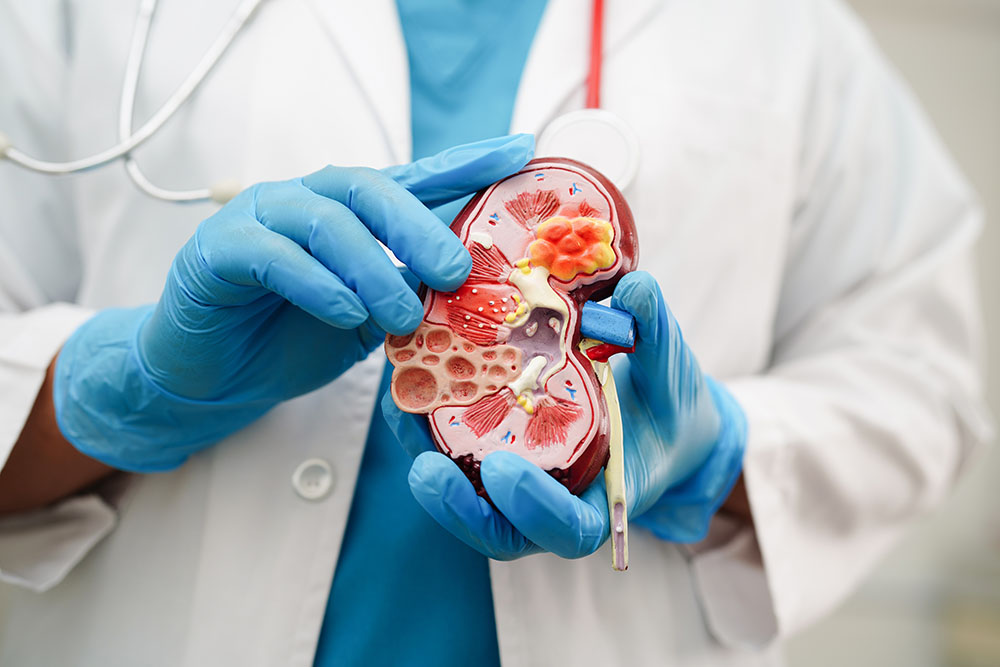
Kidney Diseases
Chronic kidney disease (CKD) is a condition in which the kidneys are damaged and cannot filter blood as well as they should; excess fluid and wastes from the blood remain in the body and may cause other health problems. NIDDK-supported research has uncovered critical knowledge to improve the health and quality of life of people with CKD.
- Historically, about one-third of people with type 1 diabetes and one-sixth of people with type 2 diabetes developed kidney failure. Two lifesaving renal replacement therapies, dialysis and renal transplantation, were developed thanks to fundamental NIH research in the 1960s and are now increasingly available. While these treatments offer people living with CKD more time and can improve their quality of life, both therapies would benefit from improvements and increased access.
- NIDDK research has demonstrated that some cases of acute kidney injury (AKI) can lead to the development of CKD. Additionally, catching CKD early and slowing its progression can improve health outcomes. Therefore, treatments aimed at halting progression from AKI to CKD or the early stages to later stages of CKD may decrease the incidence and severity of CKD. Foundational research, supported in part by NIDDK, has led to the discovery and development of drugs inhibiting a protein called SGLT2 that can slow the progression of kidney disease in people, including those with type 2 diabetes.
- The NIDDK-supported Kidney Precision Medicine Project (KPMP) is working to ethically and safely obtain kidney biopsies from participants with AKI or CKD, create a kidney tissue atlas, define disease subgroups, and identify critical cells, pathways, and targets for novel therapies. Ultimately, KPMP research aims to help identify new markers and treatment targets that will make treatments for kidney diseases more personalized and effective.
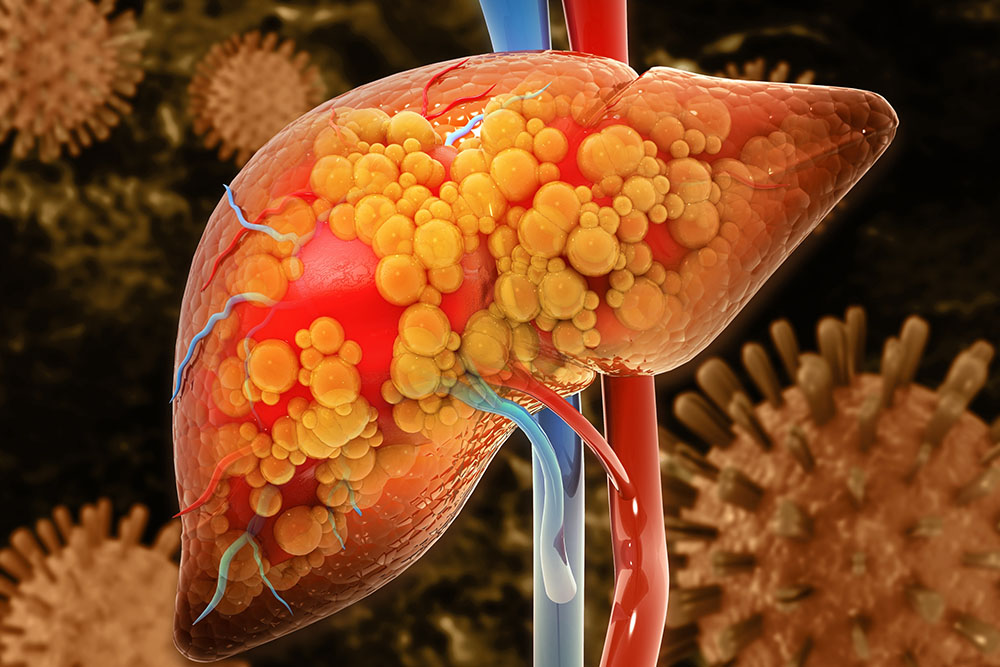
Liver Disease
Liver Disease can result from genetic and environmental causes. The two most common liver diseases are viral hepatitis—including hepatitis B, C, and D—and nonalcoholic fatty liver disease (NAFLD)—also referred to as metabolic dysfunction-associated steatotic liver disease (MASLD). NIDDK-supported research has yielded important knowledge that has improved the lives of people with many forms of chronic liver disease.
- Advances in understanding hepatitis B led to an effective and safe vaccine, available since 1982 and recommended as a universal vaccine for newborns since 1991. Hepatitis B rates decreased by almost 90% and have the potential to decrease even further by offering the vaccine to adults born before 1991 who may be at risk.
- For chronic hepatitis B, interferon and direct-acting antiviral (DAA) drugs have been shown to be highly effective in suppressing viral infection. However, these drugs must be taken long-term, if not indefinitely, and only cure the disease in some individuals. NIDDK’s Hepatitis B Research Network has shown that careful management of hepatitis B allows for long-term survival and low rates of cirrhosis, liver cancer, and end-stage liver disease. NIDDK-supported researchers continue to look for even more effective treatments and therapy combinations to improve care for those living with hepatitis B.
- The Nonalcoholic Steatohepatitis Research Network was established by NIDDK to increase our knowledge of the natural history, prognostic factors, and treatment options for nonalcoholic steatohepatitis (NASH)—also referred to as metabolic dysfunction-associated steatohepatitis (MASH). The primary objective of the network is to collect demographic, clinical, and laboratory variables associated with the diagnosis of NASH/MASH and its key histological features in adults and children with NASH/MASH. The network has enrolled more than 3,500 adults and children and added participant information into databases that could be used to identify predictors of severity of NAFLD/MASLD.

Inflammatory Bowel Disease (IBD)
Inflammatory bowel disease (IBD), which includes Crohn’s disease and ulcerative colitis, is marked by chronic, destructive inflammation in the gastrointestinal tract. This inflammation can lead to rectal bleeding, diarrhea, nutritional deficiencies, and other serious complications. NIDDK-supported research has improved our understanding of IBD and yielded new treatment approaches for patients with these diseases.
-
Early treatments (before the 1950s) for IBD were limited to surgical removal of the affected area. People with ulcerative colitis usually required removal of the entire colon. For Crohn’s disease, surgery was limited to smaller affected areas, but it would not necessarily cure the disease.
-
It is now becoming possible to correlate specific genetic variants and other clinical test results with IBD severity and responsiveness to therapies. For example, the NIDDK-sponsored Predicting Response to Standardized Pediatric Colitis Therapy (PROTECT) Study determined that a combination of clinical, genetic, and immunologic tests can be used to predict response to standard medical therapy for children newly diagnosed with ulcerative colitis.
-
Researchers recently identified new genetic risk factors for IBD by analyzing the genomes of tens of thousands of people from countries in East Asia alongside the genomes of people with ancestry from European countries. The inclusion of people from East Asia significantly expands the diversity of IBD genetic studies and provides insights that will help to understand and predict the disease in all people.
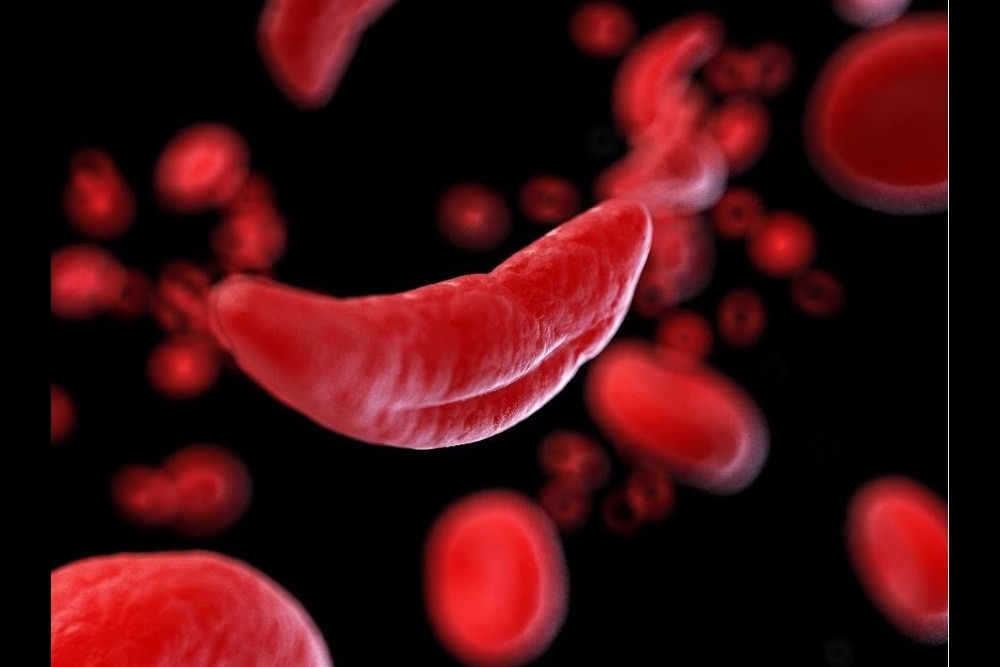
Sickle Disease and Anemia
Sickle cell disease (SCD) is caused by a specific mutation in a gene that codes for the β-globin component of the hemoglobin protein. The mutated version of hemoglobin results in red blood cells (RBCs), which are normally round, becoming sickle shaped. People with sickle-shaped blood cells are more likely to have lower iron and oxygen levels in their blood and fewer red blood cells overall. The 2019 Nobel Prize in Physiology or Medicine was awarded to an NIDDK grant recipient for his research into how cells detect oxygen and react to low oxygen levels, which include mechanisms that contribute to some of the adverse health outcomes in SCD and could serve as potential therapeutic targets.
- As recently as 1970, the average patient with SCD died in adolescence, often of overwhelming infection. While we have made progress in ensuring that people with SCD live longer, approximately 10% of children with SCD still suffer debilitating strokes due to lack of oxygen to the brain during acute vaso-occlusive crisis (a painful complication of SCD occurring when sickled red blood cells block blood flow to organs and tissues).
- Based in part on NIDDK-supported research, hydroxyurea became the first medication approved by the U.S. Food and Drug Administration for prevention of painful sickle cell episodes in patients 2 years of age and older. Hydroxyurea increases life expectancy, reduces emergency department visits and hospitalizations, and is cost effective for gravely ill adult patients.
- Thanks to careful and innovative clinical research studies, blood cell transplantation offers a potential cure for most adults and children with SCD. Initially, this strategy was limited by the stringent matching requirements for donors, but continued research is working to overcome this hurdle by identifying strategies that reduce the matched donor requirement.

Nutrition Research
Poor diet is often linked to diseases that are common, chronic, and costly in the United States, such as type 2 diabetes, obesity, chronic kidney disease, and nonalcoholic fatty liver disease. NIDDK-supported research has yielded important knowledge about human nutrition, improving the lives of people with many forms of diet-related disease.
- Over the past several decades in the United States, disease burdens have been shifting towards more diet-related chronic diseases.
- The NIDDK-funded Diabetes Prevention Program Outcomes Study highlights the importance of lifestyle modification interventions, as diet and exercise can reduce the incidence of type 2 diabetes and limit its complications.
- Nutrition science is moving toward more holistic, food-based, and personalized or “precision nutrition” approaches, as outlined in the 2020-2030 Strategic Plan for NIH Nutrition Research, developed by the NIH Nutrition Research Task Force with leadership from NIDDK and others at NIH. The approaches consider the interplay of many factors contributing to individual variability in how diet can affect health outcomes. The Office of Nutrition Research has since expanded to develop, lead, and manage trans-NIH nutrition research projects in collaboration with NIH institutes and centers.

Obesity Research
Obesity is a strong risk factor for type 2 diabetes, fatty liver disease, and many other disorders within the NIDDK’s mission. NIDDK-supported research through the years has improved our understanding of body weight regulation and yielded new treatment approaches for people with obesity.
-
The percent of adults and children with obesity (BMI ≥ 30) increased dramatically in the United States beginning in the 1980s. The prevalence of severe obesity, which carries even greater health risks, also increased.
-
The NIDDK-funded Look AHEAD (Action for Health in Diabetes) randomized clinical trial showed that, through an intensive lifestyle intervention involving increased physical activity and healthy eating, people with obesity and type 2 diabetes are able to achieve and maintain a clinically meaningful weight loss. The study enrolled more than 5,100 adults ages 45 to 76 with overweight/obesity and type 2 diabetes, and the effects of the intervention lasted up to 11 years.
-
NIDDK-supported research has improved our understanding of body weight regulation and yielded new treatment approaches, such as GLP-1 agonists, for people who have obesity or overweight. Basic NIH research on hormonal control of blood glucose—including the discovery of the gene for glucagon (a hormone that promotes the release of glucose)—ultimately led to FDA-approved therapies to help people with type 2 diabetes lower their blood glucose while reducing their risk of cardiovascular disease, as well as new treatments for obesity. In June 2021, the first GLP-1 agonist, semaglutide, was approved by the FDA for chronic weight management in adults with overweight or obesity and an additional weight-related condition, such as high blood pressure.
Get Updates
Subscribe to NIDDK’s e-newsletters and follow us on LinkedIn, X, Facebook, Instagram, and YouTube for health information and the latest updates about the NIDDK’s initiatives, events, research, and funding opportunities.
Anniversary Banner Images

The images featured on the home page are as follows:
-
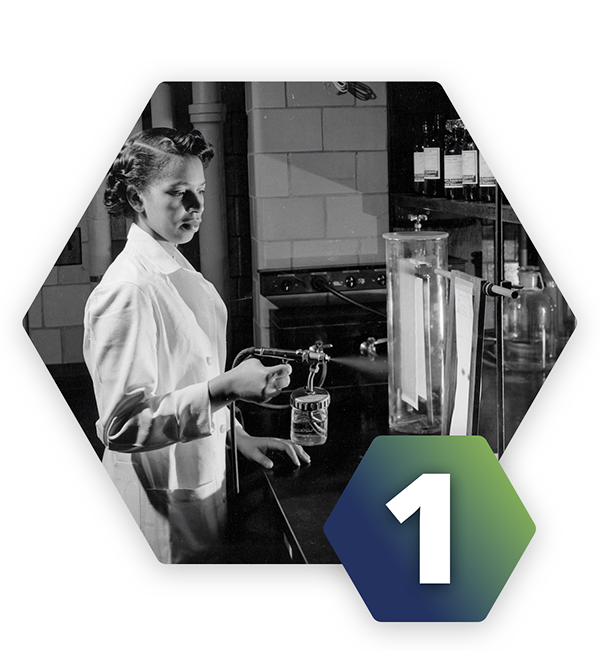
Alma Levant Hayden of the National Institute of Arthritis and Metabolic Diseases demonstrating a technique called paper chromatography. Office of NIH History, National Institutes of Health.
-
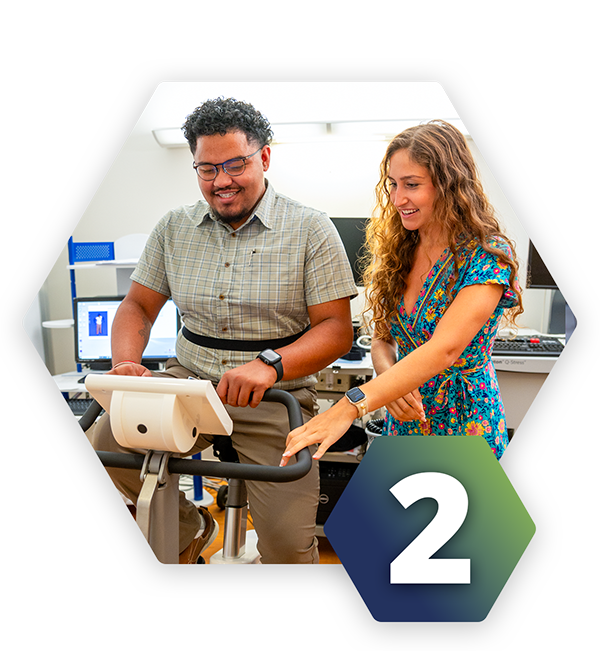
Person on an exercise bike in the NIDDK Metabolic Clinical Research Unit lab. Access image on the NIDDK Image Library.
-
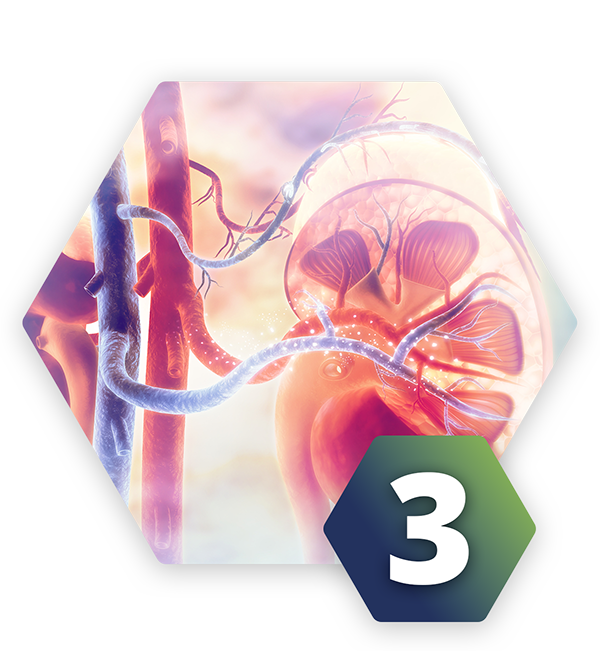
Human kidney cross section. Shutterstock.
-
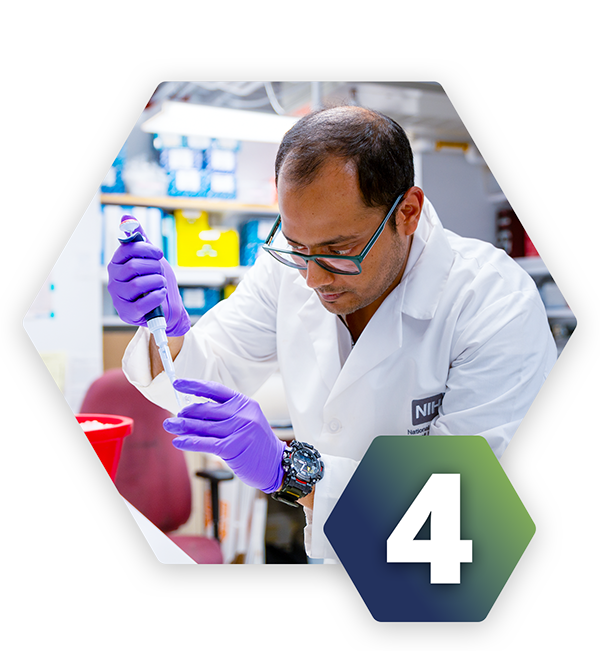
Researcher holding syringe in the NIDDK lab. Access image on the NIDDK Image Library.
-

Tissue on a chip. Dr. Ashu Agarwal at the University of Miami, and Dr. Cherie Stabler at the University of Florida.
-
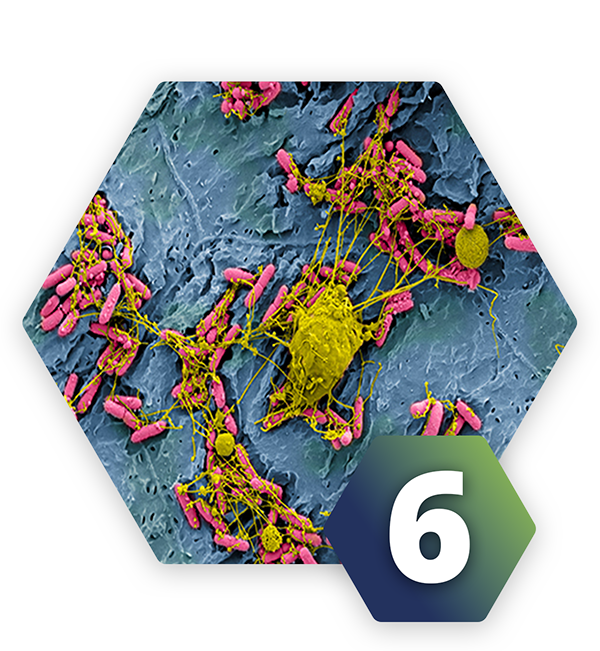
E. coli bladder infection. Valerie O’Brien, Ph.D., Flickr.












